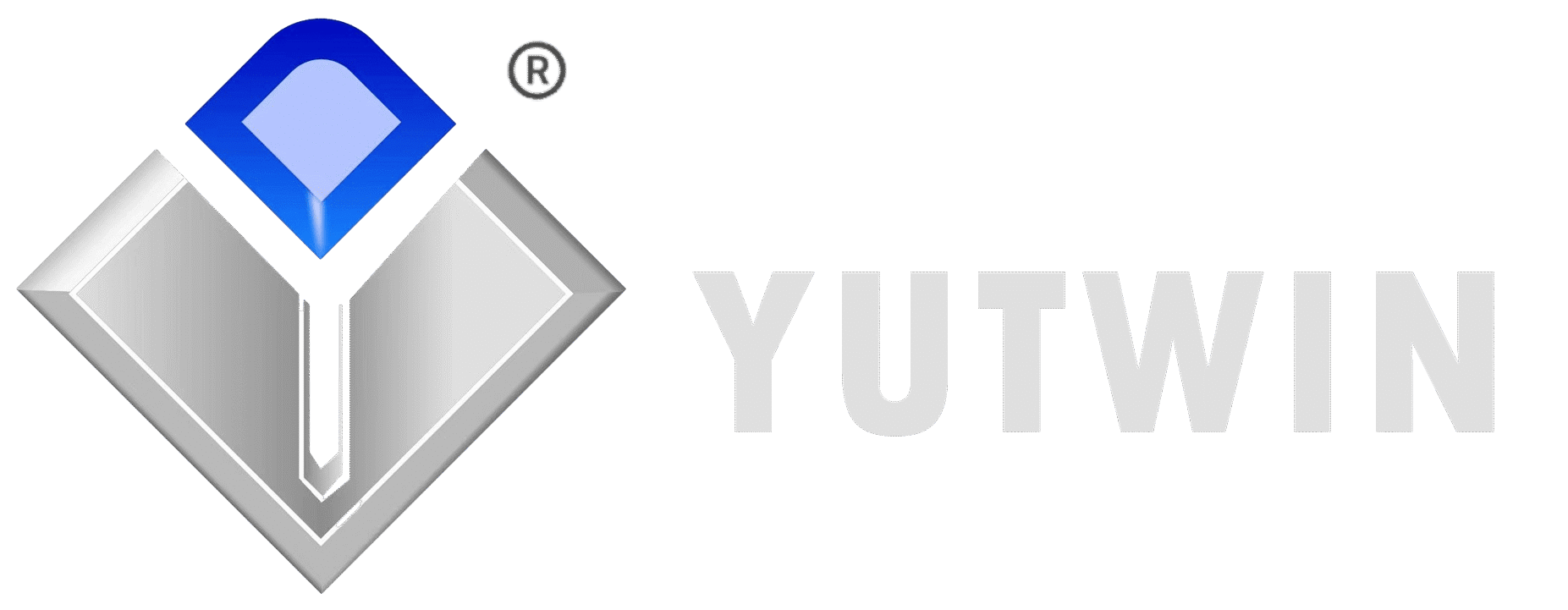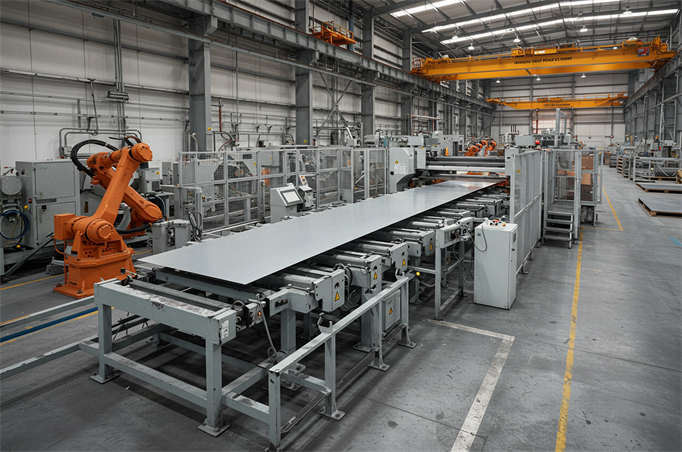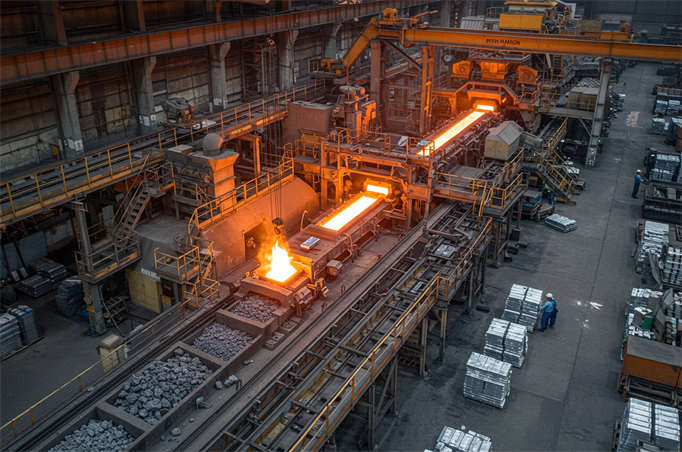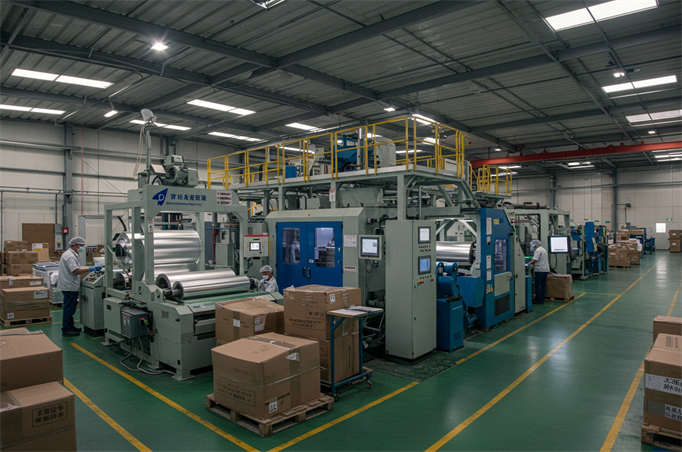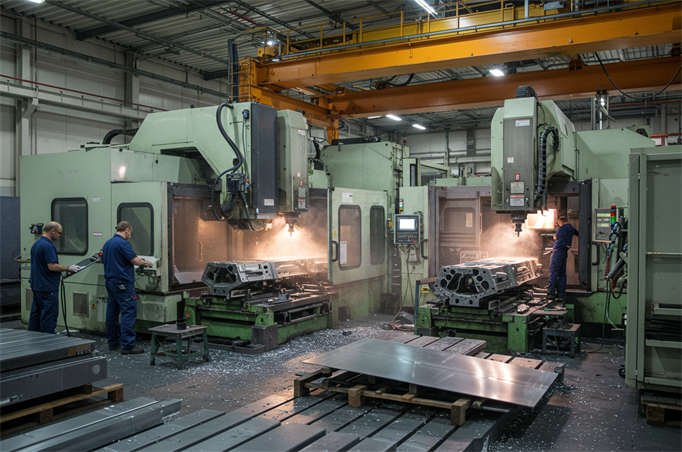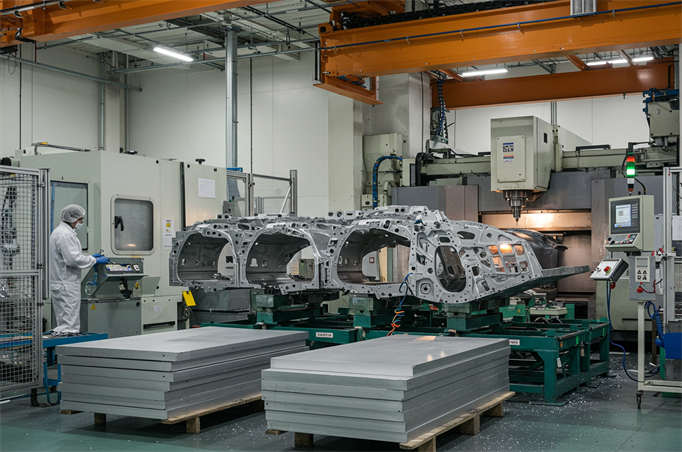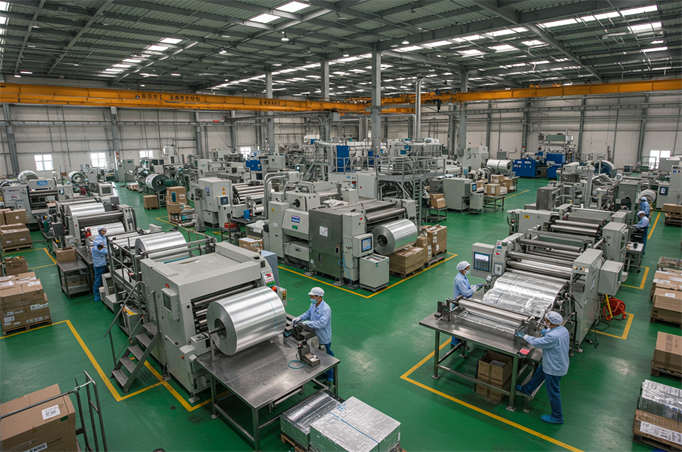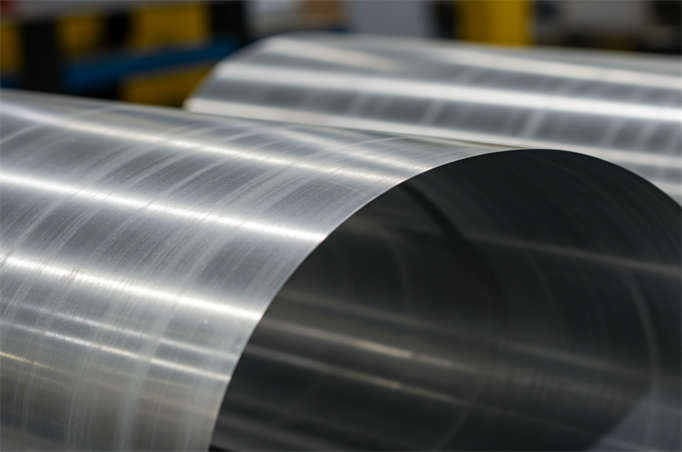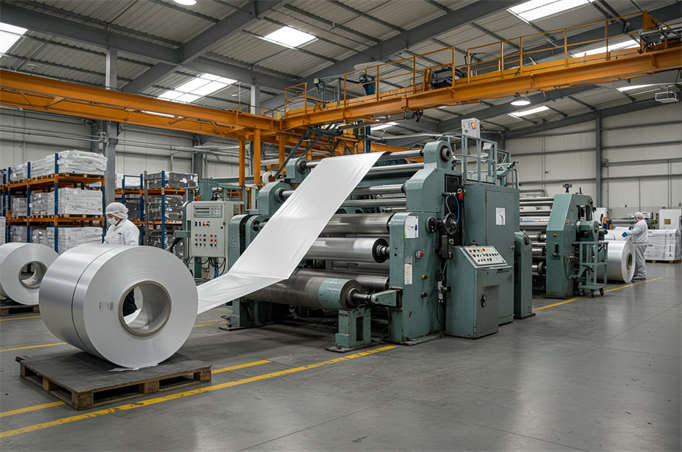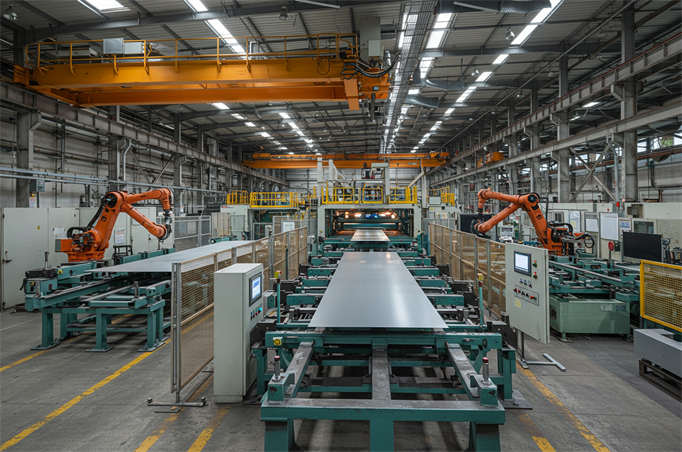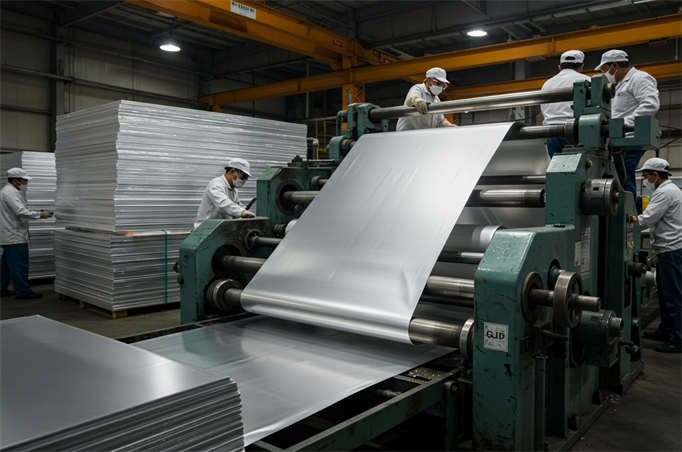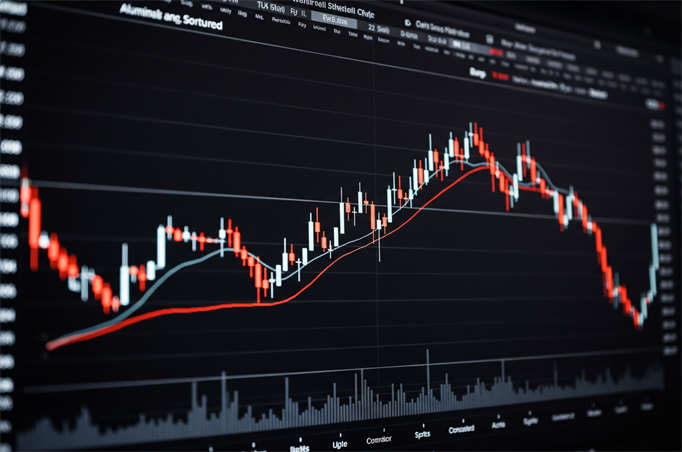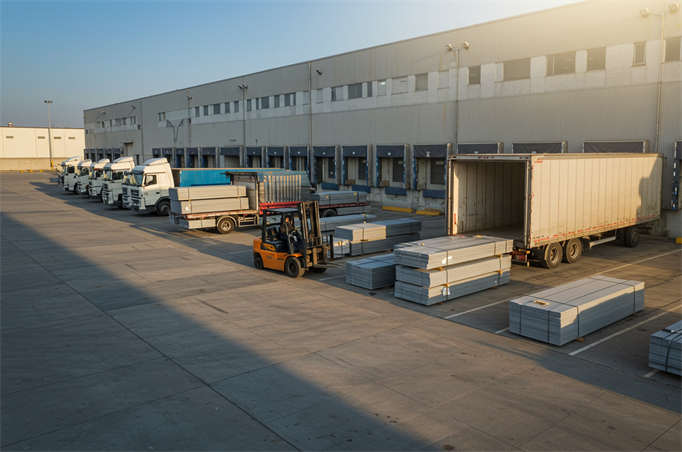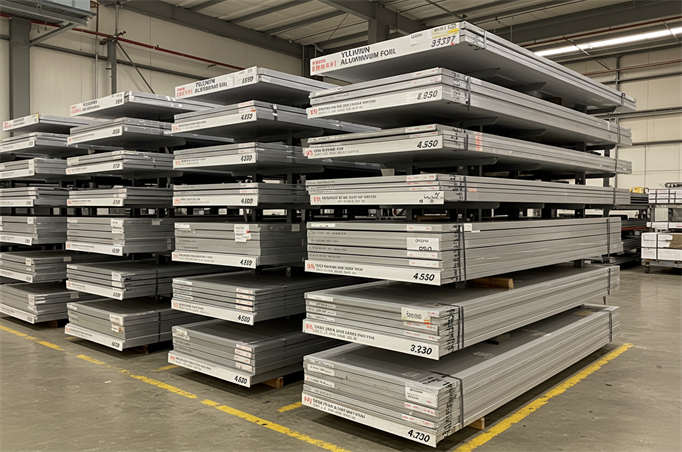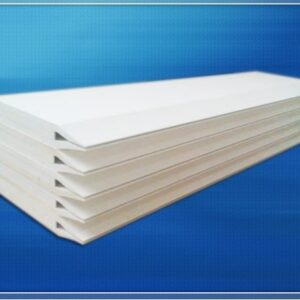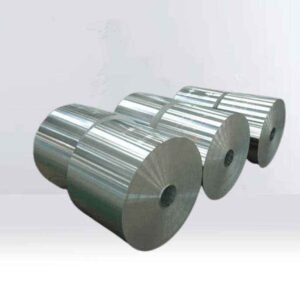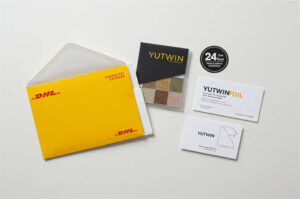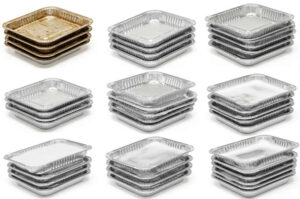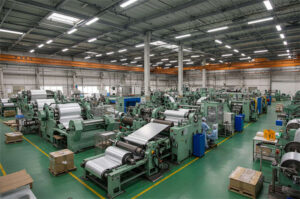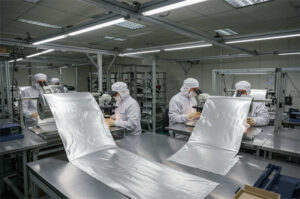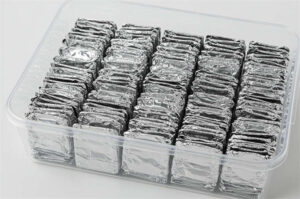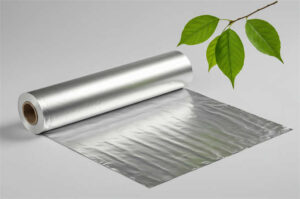In the dynamic world of industrial manufacturing and construction, 4×8 aluminum sheets have emerged as a versatile and essential material. Here at Yutwin Aluminum Foil, we specialize in providing high-quality 4×8 aluminum sheets tailored to meet the diverse needs of industries worldwide. Our extensive experience and commitment to excellence position us as a leading supplier of aluminum products.
4×8 aluminum sheets, measuring 4 feet by 8 feet (1220mm x 2440mm), are renowned for their adaptability and performance. They are utilized across a broad spectrum of sectors, from building construction and transportation to electronics and packaging. The unique properties of aluminum, such as its lightweight nature, corrosion resistance, and excellent malleability, make these sheets an ideal choice for numerous applications.
The selection of the right aluminum alloy is crucial for the performance of 4×8 aluminum sheets. Standard alloys include 1050, 1060, 1100, 3003, 3004, 5052, 5083, 6061, and 7075, each offering distinct characteristics suitable for specific industrial requirements. For example, 6061 aluminum sheets are favored for their superior strength and weldability, making them perfect for automotive and construction components. In comparison, 7075 aluminum sheets are prized in aerospace applications due to their high strength and hardness.
At Yutwin Aluminum Foil, we understand that the performance of 4×8 aluminum sheets extends beyond their material composition. Their lightweight nature significantly reduces structural weight in transportation and aerospace industries, enhancing fuel efficiency and operational performance.
The natural corrosion resistance of aluminum ensures longevity, even in harsh environments, reducing maintenance costs and extending the lifespan of structures and components. Additionally, the ease of processing allows for cost-effective manufacturing of complex parts. At the same time, the aesthetic appeal of aluminum sheets can be enhanced through various surface treatments to meet specific design requirements.
Several factors influence the price of 4×8 aluminum sheets.
Fluctuations in raw material costs, such as those for aluminum ingots and alumina, directly impact production expenses. Energy costs, particularly electricity, play a substantial role due to the power-intensive nature of aluminum production. Transportation costs also affect the final price, as they encompass the movement of both raw materials and finished products.
Alloy composition and impurity levels further determine the price of aluminum sheets. High-purity alloys, which offer superior performance, often come with higher price tags due to the stringent production processes involved. Surface process treatments, such as anodizing and painting, add value but also increase costs. The thickness and dimensions of the sheets, along with market supply and demand dynamics, also contribute to pricing variations.
Understanding these factors can help businesses make informed decisions when selecting 4×8 aluminum sheets for their projects. Whether you are involved in construction, transportation, electronics, or any other industry, choosing the proper aluminum sheets can significantly impact the success and cost efficiency of your project.
In the following sections of this blog, we will delve deeper into the applications and price determinants of 4×8 aluminum sheets. We will explore how different industries leverage the unique properties of these sheets and provide insights into the market factors that influence their pricing. By the end of this blog, you will have a comprehensive understanding of why 4×8 aluminum sheets are a preferred material choice and how Yutwin Aluminum Foil can be your trusted partner in supplying these sheets.
At Yutwin Aluminum Foil, we’re your go-to source for 4×8 aluminum sheets, which measure 4 feet by 8 feet (equivalent to 1220 mm x 2440 mm). We’ve put together this comprehensive guide to give you a deeper understanding of these versatile products.
Our Materials and Their Unique Characteristics
We offer a diverse range of ligas de alumínio, each with specific properties to meet your project needs:
- 1050 Aluminum Sheet: As an industrial-grade pure aluminum, it offers high plasticity and low density. We use it to manufacture various containers, pipes, and radiators, and it’s also a common component in different aluminum alloys.
- 1060 Aluminum Sheet: This pure aluminum sheet boasts high aluminum content, excellent corrosion resistance, high conductivity, and good formability. We frequently use it for conductive materials, low-load parts, and heat exchangers.
- 1100 Aluminum Sheet: We leverage its good corrosion resistance, plasticity, and weldability for parts and chemical equipment requiring high plasticity, excellent weldability, and low resistência à corrosão. It also serves as raw material for welding cables and other aluminum products.
- 3003 Aluminum Sheet: Our aluminum-manganese alloy offers good formability, corrosion resistance, and weldability, with higher strength than 1060 aluminum sheets. We widely use it in the food industry for containers and storage devices, making it one of our most popular rust-proof aluminum sheets.
- 3004 Aluminum Sheet: This aluminum-manganese alloy surpasses 3003 aluminum in strength, corrosion resistance, and weldability. We find it ideal for producing product parts and stamping complex, deep-drawn components.
- 5052 Aluminum Sheet: Our aluminum-magnesium alloy provides medium strength, corrosion resistance, weldability, and cold stamping performance. We use it for manufacturing stone or grease pipelines, as well as various liquid containers.
- 5083 Aluminum Sheet: This heat-treatable aluminum-magnesium-silicon alloy delivers high strength and toughness, excellent weld seam quality, and superior corrosion resistance compared to general aluminum alloys. We primarily use it for welding components and parts in vehicles, ships, and aircraft.
- 6061 Aluminum Sheet: After heat treatment and pre-stretching, this aluminum-magnesium-silicon alloy offers good formability, fatigue limit, corrosion resistance, and weldability. We utilize it to manufacture parts that require specific strength and toughness, such as automotive components, electrical products, and building exteriors.
- 7075 Aluminum Sheet: This aluminum-zinc-magnesium-copper alloy is a super-hard aluminum sheet known for its high strength and specific heat resistance. We utilize it for aircraft parts, molds, and high-toughness components, though it has lower stress corrosion resistance.
Key Characteristics of Our 4×8 Aluminum Sheets
Our 4×8 aluminum sheets stand out due to these remarkable characteristics:
- Leve: With a density of approximately 2.7 g/cm³, our aluminum sheets significantly reduce structural weight in the aerospace and automotive industries, improving logistics efficiency and saving energy.
- Strong Corrosion Resistance: Aluminum’s surface readily forms a dense alumina film, preventing further oxidation of the internal metal. Esse allows our sheets to adapt to various complex environments and extends their service life.
- Appropriate Strength: The strength of our 4×8 aluminum sheets varies depending on the material and temperature. For example, our 6061-T6 aluminum sheets achieve a tensile strength of 240-276 MPa and a yield strength of 262-318 MPa, with an 8% elongation, meeting the strength requirements of various engineering applications.
- Easy to Process: Our aluminum sheets offer excellent ductility and toughness, making them easy to work with. We can process them through cold rolling, extrusion, stamping, and stretching to create a variety of shapes and sizes, thereby boosting efficiency and reducing manufacturing costs.
- Unique Aesthetics: Our aluminum sheets feature a smooth and delicate surface with good luster. We can apply surface treatments like anodizing, electrophoresis, powder coating, and painting to achieve a rich array of colors and decorative shapes, meeting our customers’ diverse aesthetic needs.
Our 4×8 Aluminum Sheets: Diverse Applications
We see our 4×8 aluminum sheets used across a wide range of industries:
- Indústria de construção: We supply 5052 and Chapas de alumínio 6061 for curtain walls, doors, windows, roofs, and exterior wall decorations. After surface treatment, these sheets resist harsh weather and maintain their aesthetic appeal. We also provide patterned aluminum sheets for anti-slip treads and stair steps in buildings.
- Transportation Industry: Our 4×8 aluminum sheets are essential materials in the manufacturing of vehicles, ships, and aircraft. For instance, we recommend 5083 aluminum sheets for shipbuilding and 7075 aluminum sheets for aircraft components. These choices reduce vehicle weight, decrease fuel consumption, and improve operational speed and efficiency.
- Electronics and Electrical Appliance Industry: We use 1060 and 1100 aluminum sheets to produce electronic equipment casings, heat sinks, and circuit boards. Their excellent conductivity and thermal conductivity meet the needs of electronic and electrical products for heat dissipation and electromagnetic shielding.
- Indústria química: Our 1050, 1060, and 1100 aluminum sheets offer good corrosion resistance. We utilize them to manufacture chemical equipment, containers, and pipelines, ensuring resistance to various acid and alkaline solutions and extending the lifespan of the equipment.
- Setor de embalagens: We use 8011 aluminum sheets to create aluminum foil and packaging products. Their excellent plasticity, water resistance, rust resistance, and barrier properties effectively protect packaged goods.
- Other Fields: Our 4×8 aluminum sheets also find application in mechanical manufacturing, electrical appliance manufacturing, architectural decoration, and handicraft production. For example, we utilize them to create electrical product casings, furniture, decorations, and sculptures, leveraging their excellent processing performance and decorative shaping capabilities.
Factors Influencing 4×8 Aluminum Sheet Pricing
Several key factors influence the price of our 4×8 aluminum sheets:
Custos de matéria-prima
- Aluminum Ingot Price: Aluminum ingots are the primary raw material for our aluminum sheets, and their price directly impacts the cost. For example, if aluminum prices rise, our production costs increase, leading to higher aluminum sheet prices.
- Aluminum Ore Price: Aluminum ore is the raw material for refining aluminum ingots. Changes in its price will ultimately affect the cost of our aluminum sheet products.
- Custos de energia: Aluminum sheet production requires a substantial amount of electricity. Energy costs represent a significant portion of our expenses, so fluctuations in energy supply directly impact product costs. For instance, producing one ton of aluminum requires approximately 15 megawatt-hours of electricity. If electricity prices increase, the costs of our aluminum sheet products will rise significantly.
- Logistics Costs: Transporting raw materials and finished aluminum sheets incurs costs. Changes in transportation distance, methods, and fuel prices will affect the final delivered price.
Alloy Composition and Material
- Alloy Series: Different aluminum alloy series have significant price differences. For example, our 1050 and 1060 pure aluminum series sheets are generally lower priced. However, our 6061 and 7075 aluminum-magnesium-silicon or aluminum-zinc-magnesium-copper alloy sheets contain special elements, offering higher strength and unique properties, which translates to higher production costs and prices.
- Impurity Content: The impurity content of our aluminum sheets affects their performance and quality. High-purity aluminum sheets offer superior characteristics, necessitating higher production standards and costs, which in turn result in higher prices.
Surface Treatment Technology
- Tratamento de revestimento: Surface treatment technologies such as anodizing, electrophoresis, powder coating, and painting increase the cost and price of our aluminum sheets. Different coatings offer varying performance and durability, resulting in various price points. For example, our fluorocarbon-coated aluminum sheets cost more than our standard-coated aluminum sheets.
- Pattern Embossing: For patterned aluminum sheets, we must emboss surface patterns, which increases production complexity and cost. These sheets cost more than plain aluminum sheets, and the complexity of the patterns and processing requirements further influence the price.
Size and Thickness
- Size Ratio: While the specifications for 4×8 aluminum sheets are relatively fixed, different suppliers and manufacturers will have varying levels of waste during cutting and production. Higher precision requirements for dimensions lead to greater processing difficulty and cost, resulting in higher prices.
- Espessura: The thickness of our aluminum sheets impacts the price. Thinner sheets require more raw materials and incur higher production difficulties and costs, leading to higher prices. For example, a 3mm thick patterned aluminum sheet will likely cost more than a 2mm thick five-bar patterned aluminum sheet.
Market Supply and Demand
- Peak Demand: During peak seasons for downstream industries like construction and automotive, demand for 4×8 aluminum sheets increases, leading to tighter supply and potential price increases. Conversely, prices may fall during off-peak seasons.
- Supply Conditions: The output, production capacity, and market inventory of aluminum sheet manufacturers significantly impact prices. If many manufacturers expand production, market oversupply may drive prices down. Conversely, if some manufacturers limit or stop production, reduced supply may lead to price increases.
Macroeconomic Environment and Regulations
- Macroeconomic Situation: During economic booms, aluminum supply shortages in construction, automotive, and electronics industries drive up aluminum sheet prices. When the economy declines, reduced demand puts downward pressure on prices.
- Trade Policies: International trade disputes and tariff adjustments affect the import and export of aluminum sheets. For instance, if the US imposes tariffs on Chinese aluminum, Chinese aluminum exports will face obstacles, leading to increased domestic market supply and potentially lower prices.
- Environmental Policies: Strict environmental policies may force some smaller aluminum production enterprises to cease or limit production due to increased ecological costs, reducing market supply and driving up prices.
Regional Differences and Sales Channels
- Diferenças regionais: Variations in manufacturing processes, energy costs, and transportation costs among manufacturers in different regions result in cost disparities. For example, our prices in Shanghai might be higher than those in Henan and other regions.
- Sales Channels: Different sales channels, such as manufacturer wholesale, agency sales, and retailer sales, significantly impact prices. Wholesale typically offers lower prices, while retail sales may result in higher prices.
The Relationship Between 4×8 Aluminum Sheet Prices and Aluminum Ingot Prices
The price of our 4×8 aluminum sheets is closely tied to the cost of aluminum ingots, primarily in these aspects:
Cost Perspective
- Aluminum Ingot as the Main Raw Material: We primarily use aluminum ingots for cold rolling our 4×8 aluminum sheets. The cost of aluminum ingots typically accounts for 70%-80% of the total aluminum sheet cost. When aluminum ingot prices rise, the cost of our aluminum sheet products also increases, resulting in higher prices. Conversely, when aluminum ingot prices fall, our aluminum sheet costs decrease, generally leading to lower prices.
- Cost Transmission: The cost of aluminum ingots encompasses expenses such as bauxite, energy, and labor. Changes in these costs affect aluminum ingot prices, which then are transmitted to the price of our aluminum sheets. For example, if energy costs are a significant portion of aluminum ingot production, a rise in electricity prices will increase aluminum ingot costs, subsequently driving up aluminum sheet prices.
Pricing Mechanism
- “Aluminum Ingot Price + Processing Fee” Model: We often price our aluminum sheets using an “aluminum ingot price + processing fee” model. The processing fee covers our costs for cold rolling, cutting, surface treatment, and our profit for producing the aluminum sheets. When aluminum ingot prices fluctuate, we adjust our aluminum sheet prices to reflect these cost changes. For example, if the price of aluminum ingots rises by $140 per ton, we might correspondingly increase our aluminum sheet price by $112-$140 per ton.
- Relatively Stable Processing Costs: Our processing costs remain relatively stable over a specific period and at a given production scale. Therefore, changes in aluminum ingot prices become a primary factor influencing our aluminum sheet prices. Even with unchanged processing costs, fluctuations in aluminum ingot prices can cause significant variations in our aluminum sheet prices.
Market Supply and Demand
- Impact of Aluminum Ingot Supply: Aluminum ingot supply is influenced by factors such as bauxite mining, alumina production, and electrolytic aluminum production levels. If bauxite supply is tight or alumina output decreases, aluminum ingot production declines. If aluminum ingot demand remains constant, aluminum ingot prices will rise, consequently pushing up our aluminum sheet prices.
- Impact of Aluminum Sheet Demand: Our aluminum sheets are widely used in the construction, automotive, and electronics industries. When demand from these industries increases, our aluminum sheet production rises. If the supply of aluminum ingots cannot meet this demand, aluminum ingot prices will increase, which in turn drives up our aluminum sheet prices.
Market Expectations and Speculation
- Futures Market Expectations: Participants in the aluminum ingot futures market trade aluminum ingot futures contracts based on their expectations for future supply, demand, and economic conditions. Suppose the market anticipates tight aluminum ingot supply or a sharp increase in demand in the future. In that case, investors will buy futures contracts, driving up prices in the futures market and subsequently affecting the prices of spot aluminum ingots and aluminum sheets. Conversely, if the market expects future oversupply, investors will sell contracts, accelerating price declines.
- Speculative Impact: Some investors and traders engage in speculative activities based on trends in aluminum ingot and aluminum sheet prices. Under expectations of significant price increases, they may accumulate aluminum ingots or sheets, thereby reducing market supply and further driving up prices. Conversely, under expectations of price declines, they may sell off inventory, exacerbating price drops.
As we conclude this blog, it is clear that 4×8 aluminum sheets are indispensable across a multitude of industries. Their exceptional combination of lightweight, strength, corrosion resistance, and versatility makes them a preferred material for countless applications. Here at Yutwin Aluminum Foil, we take pride in delivering top-quality 4×8 aluminum sheets that meet the exacting standards of our global clientele.
The price of 4×8 aluminum sheets is intricately linked to aluminum ingot prices, as aluminum ingots form the primary raw material. The cost of producing aluminum ingots accounts for a significant portion of the total production cost of aluminum sheets. When aluminum ingot prices rise, it directly increases the cost of manufacturing 4×8 aluminum sheets, leading to a subsequent rise in their prices. Conversely, a decline in aluminum ingot prices can reduce production costs, potentially lowering the prices of aluminum sheets.
Market supply and demand dynamics also play a pivotal role in determining the price of 4×8 aluminum sheets. During periods of high demand, particularly in industries such as construction and automotive, the increased demand for aluminum sheets can outpace supply, driving prices upward. Conversely, in times of oversupply or reduced demand, prices may decrease. Additionally, macroeconomic factors, trade policies, and environmental regulations can influence the pricing landscape of the aluminum industry.
At Yutwin Aluminum Foil, we are committed to assisting our clients in navigating these market fluctuations. We offer competitive pricing backed by our commitment to quality and service. Our extensive product range caters to a wide range of industrial needs, from general-purpose applications to highly specialized requirements.
We invite you to explore the vast potential of 4×8 aluminum sheets and discover how they can enhance the efficiency, durability, and aesthetics of your projects. Yutwin Aluminum Foil is not just a supplier; we are your reliable partner in the aluminum industry.
Contact us today to learn more about our premium 4×8 aluminum sheets and experience the Yutwin difference for yourself. Whether you are looking to construct a new building, manufacture cutting-edge automotive parts, or create innovative electronic devices, our high-quality aluminum sheets are ready to meet your challenges head-on.
